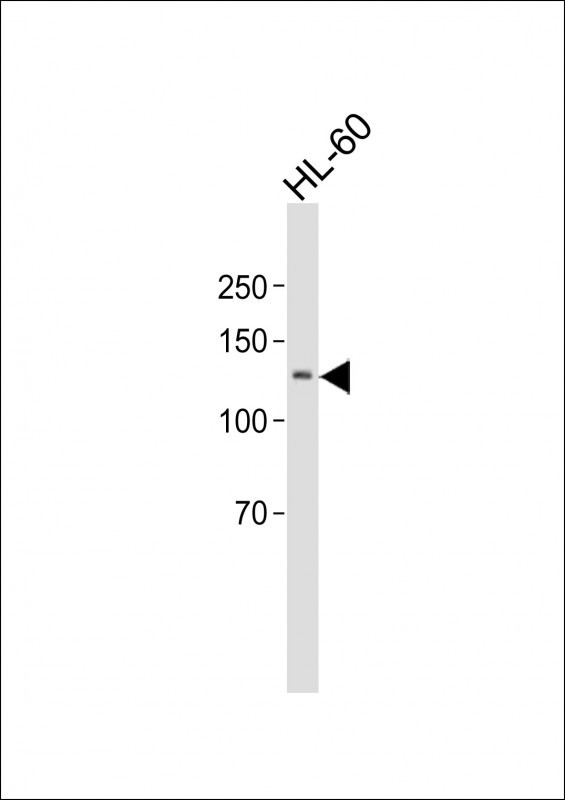SPN Antibody (N-term)
Affinity Purified Rabbit Polyclonal Antibody (Pab)
- 产品详情
- 实验流程
- 背景知识
Application
| WB, E |
|---|---|
| Primary Accession | P16150 |
| Other Accession | NP_001025459.1, NP_003114.1 |
| Reactivity | Human |
| Host | Rabbit |
| Clonality | Polyclonal |
| Isotype | Rabbit IgG |
| Calculated MW | 40322 Da |
| Antigen Region | 35-64 aa |
| Gene ID | 6693 |
|---|---|
| Other Names | Leukosialin, Galactoglycoprotein, GALGP, Leukocyte sialoglycoprotein, Sialophorin, CD43, SPN, CD43 |
| Target/Specificity | This SPN antibody is generated from rabbits immunized with a KLH conjugated synthetic peptide between 35-64 amino acids from the N-terminal region of human SPN. |
| Dilution | WB~~1:1000 E~~Use at an assay dependent concentration. |
| Format | Purified polyclonal antibody supplied in PBS with 0.05% (V/V) Proclin 300. This antibody is purified through a protein A column, followed by peptide affinity purification. |
| Storage | Maintain refrigerated at 2-8°C for up to 2 weeks. For long term storage store at -20°C in small aliquots to prevent freeze-thaw cycles. |
| Precautions | SPN Antibody (N-term) is for research use only and not for use in diagnostic or therapeutic procedures. |
| Name | SPN |
|---|---|
| Synonyms | CD43 |
| Function | Predominant cell surface sialoprotein of leukocytes which regulates multiple T-cell functions, including T-cell activation, proliferation, differentiation, trafficking and migration. Positively regulates T-cell trafficking to lymph-nodes via its association with ERM proteins (EZR, RDX and MSN) (By similarity). Negatively regulates Th2 cell differentiation and predisposes the differentiation of T-cells towards a Th1 lineage commitment. Promotes the expression of IFN-gamma by T-cells during T-cell receptor (TCR) activation of naive cells and induces the expression of IFN-gamma by CD4(+) T-cells and to a lesser extent by CD8(+) T-cells (PubMed:18036228). Plays a role in preparing T-cells for cytokine sensing and differentiation into effector cells by inducing the expression of cytokine receptors IFNGR and IL4R, promoting IFNGR and IL4R signaling and by mediating the clustering of IFNGR with TCR (PubMed:24328034). Acts as a major E-selectin ligand responsible for Th17 cell rolling on activated vasculature and recruitment during inflammation. Mediates Th17 cells, but not Th1 cells, adhesion to E- selectin. Acts as a T-cell counter-receptor for SIGLEC1 (By similarity). |
| Cellular Location | Membrane; Single-pass type I membrane protein. Cell projection, microvillus {ECO:0000250|UniProtKB:P13838}. Cell projection, uropodium {ECO:0000250|UniProtKB:P15702}. Note=Localizes to the uropodium and microvilli via its interaction with ERM proteins (EZR, RDX and MSN) {ECO:0000250|UniProtKB:P13838, ECO:0000250|UniProtKB:P15702} |
| Tissue Location | Cell surface of thymocytes, T-lymphocytes, neutrophils, plasma cells and myelomas |
For Research Use Only. Not For Use In Diagnostic Procedures.
Provided below are standard protocols that you may find useful for product applications.
BACKGROUND
Sialophorin (leukosialin) is a major sialoglycoprotein on the surface of human T lymphocytes, monocytes, granulocytes, and some B lymphocytes, which appears to be important for immune function and may be part of a physiologic ligand-receptor complex involved in T-cell activation.
REFERENCES
Urano-Tashiro, Y., et al. Infect. Immun. 76(10):4686-4691(2008)
Mambole, A., et al. J. Biol. Chem. 283(35):23627-23635(2008)
Seethala, R.R., et al. Appl. Immunohistochem. Mol. Morphol. 16(2):165-172(2008)
Khunkaewla, P., et al. Mol. Immunol. 45(6):1703-1711(2008)
Rawal, A., et al. Arch. Pathol. Lab. Med. 131(11):1673-1678(2007)
终于等到您。ABCEPTA(百远生物)抗体产品。
点击下方“我要评价 ”按钮提交您的反馈信息,您的反馈和评价是我们最宝贵的财富之一,
我们将在1-3个工作日内处理您的反馈信息。
如有疑问,联系:0512-88856768 tech-china@abcepta.com.























 癌症的基本特征包括细胞增殖、血管生成、迁移、凋亡逃避机制和细胞永生等。找到癌症发生过程中这些通路的关键标记物和对应的抗体用于检测至关重要。
癌症的基本特征包括细胞增殖、血管生成、迁移、凋亡逃避机制和细胞永生等。找到癌症发生过程中这些通路的关键标记物和对应的抗体用于检测至关重要。 为您推荐一个泛素化位点预测神器——泛素化分析工具,可以为您的蛋白的泛素化位点作出预测和评分。
为您推荐一个泛素化位点预测神器——泛素化分析工具,可以为您的蛋白的泛素化位点作出预测和评分。 细胞自噬受体图形绘图工具为你的蛋白的细胞受体结合位点作出预测和评分,识别结合到自噬通路中的蛋白是非常重要的,便于让我们理解自噬在正常生理、病理过程中的作用,如发育、细胞分化、神经退化性疾病、压力条件下、感染和癌症。
细胞自噬受体图形绘图工具为你的蛋白的细胞受体结合位点作出预测和评分,识别结合到自噬通路中的蛋白是非常重要的,便于让我们理解自噬在正常生理、病理过程中的作用,如发育、细胞分化、神经退化性疾病、压力条件下、感染和癌症。






